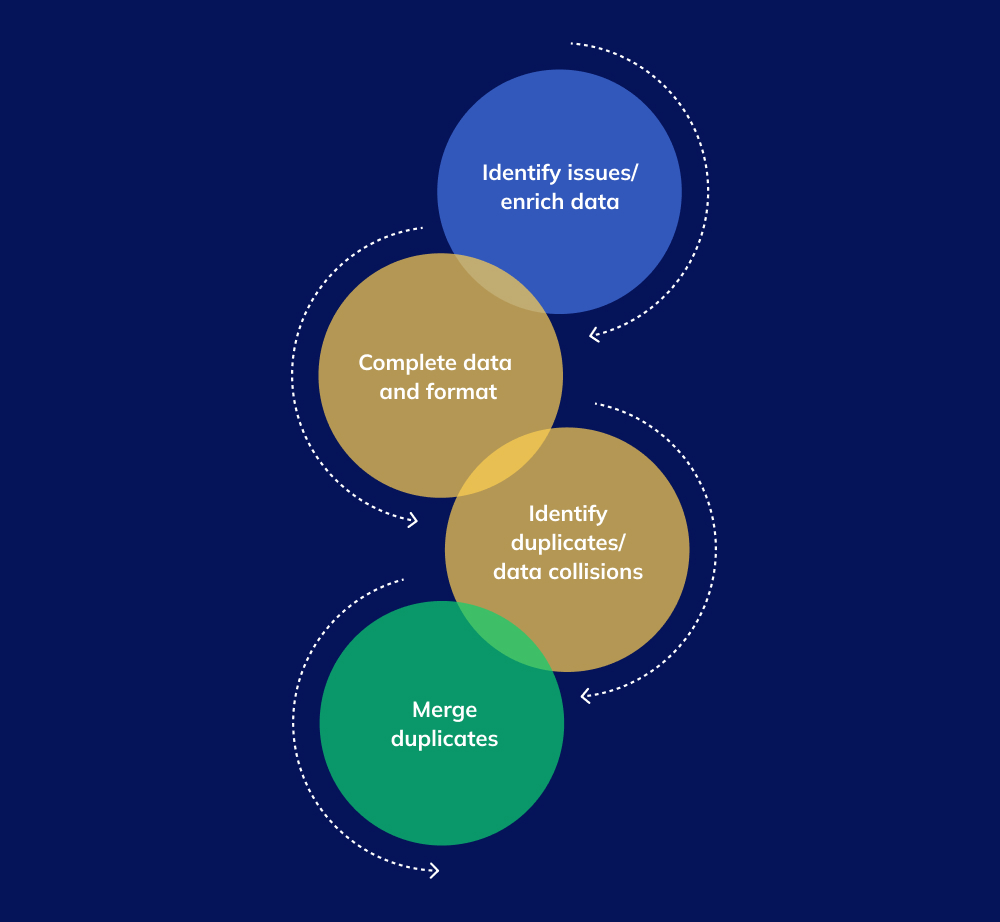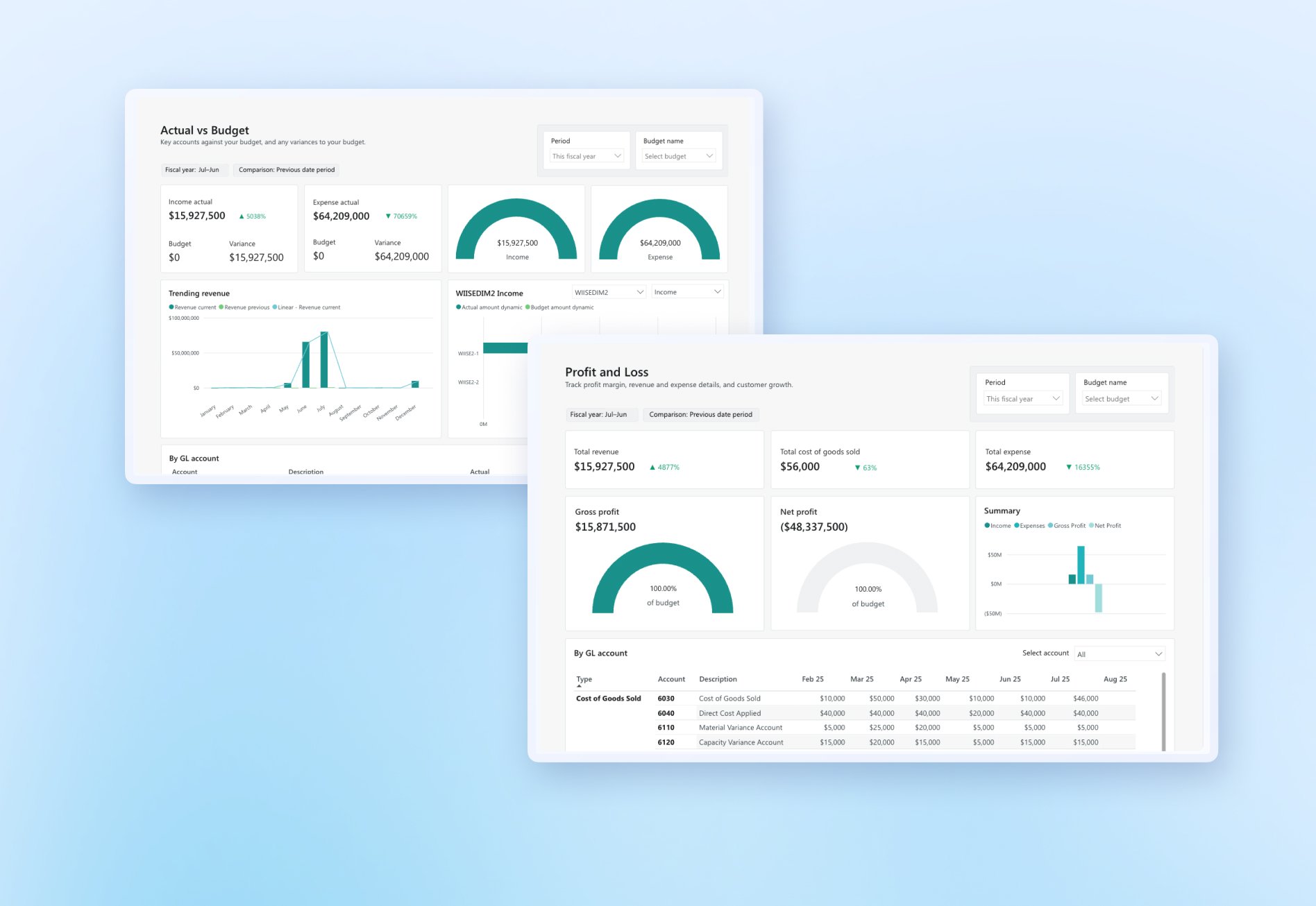Data is the lifeblood of your business. It’s also something many businesses don’t really think about – until something goes wrong. A customer receives the wrong invoice, a supplier's bank details are incorrect so they don't get paid on time or the latest P&L report doesn’t quite add up.
Even the most powerful ERP and reporting tools can’t compensate for inaccurate, incomplete, inconsistent company data. Getting your data sets prepared well before go-live is critical to getting maximum value from your new ERP system.
In this post, we’ll cover:
- Why data management matters
- Planning your ERP data migration
- Preparing your data
- Data testing
- Final checks
- Digging through the data
1. Why data management matters
Digital technology helps data to flow faster and more precisely, so it can enhance and progress everything we do – from advancing science and medicine, to making our day-to-day jobs easier. According to McKinsey, “By 2025, smart workflows and seamless interactions among humans and machines will likely be as standard as the corporate balance sheet, and most employees will use data to optimise nearly every aspect of their work”.
The problem is, all of this relies on the quality of the data being used – and most businesses struggle to keep their data clean. Eighty-five per cent of organisations admit that poor customer contact data negatively impacts their operational processes, 39% say it directly affects customer service and 38% claim that it damages the reliability of business intelligence. Gartner estimates that poor data quality is responsible for an average of $15 million per year in losses.
Better data management can bring huge benefits – with businesses that have invested in data quality claiming everything from more accurate price optimisation to happier employees.
2. Planning your ERP data migration
Preparing and migrating your data is an important task that also requires a lot of time and precision. Just like the wider ERP implementation, your data management should be planned carefully..jpg?width=2000&height=1060&name=Data%20migration%20-%20Visual%201%20(1).jpg)
How long will it take? Even though your data preparation can run parallel to other tasks, it can easily take between 1-2 months to complete all the necessary checks.
What’s involved? Preparing your data involves the following tasks:
- Data mapping – Data mapping helps you to understand what data you have, where it’s stored and to which destinations it might need to be served, ensuring that data is set up correctly in your new ERP system.
- Data cleaning – a labour-intensive but critical task to remove duplicate records, standardise data formats and correct any errors or inconsistencies in the data. Ideally, this can be shared between 2-3 internal team members, but some companies choose to out-source this task who can match and complete data using their own databases, such as Experian or Loqate.
- Data testing – testing (also known as validating) your data before, during and after the migration ensures that your data is flowing through the system correctly and is the best way to minimise any potential issues after go-live. Plan how you will test, which processes/data you’ll test and when.
Whose job is it? Your company data is very much your responsibility. While your ERP implementation partner might upload data into your new ERP – and some are willing to offer services such as populating extracted data into templates, pre-upload – extracting, cleaning and preparing it is the customer's responsibility. These responsibilities should also be clearly outlined in your scope of works (SoW) to minimise any misunderstanding and keep the project running smoothly.
3. Preparing your data
Data mapping
A recent global study revealed that many organisations manage at least 20 different customer databases. A surge in data volumes, spread across multiple systems can quickly lead to your teams losing track of what information they have and where it’s stored. (Read our customer story on the team at Pro Seafoods, who were trying to keep up with an expanded product range and a 400% customer growth using Excel spreadsheets).
Data mapping is the process of merging or connecting multiple data sets into one. Not only does this enable you to see exactly what data you have (and the data you’re potentially lacking) but also gives you a fresh start so you can migrate one set of data into your new system, eliminating any duplication or data hidden in different formats and system locations.
Data mapping is a highly complex task. Previously, the only option was to conduct manual data mapping, but now there are an increasing number of data mapping tools available, enabling teams to automate or semi-automate the process and significantly speed things up.
Data cleaning
Error-free data can seem like an unachievable goal for many businesses. Every day, new data is inputted into your business systems – from customers, finance, purchasing, product, shipping and more. If any one of these processes relies on manual data entry, the chance of errors is significantly increased (just ask the CEO of Fresh Frontiers, who discovered up to 8 different points throughout its order processing which were prone to human error).
Some of the most common data quality issues include:
- Incomplete data fields – perhaps a customer hasn’t completed an online form correctly or a staff member has accidentally missed certain fields which lead to incomplete reports.
- Duplicate data – this can occur for many reasons, including a company changing names or being entered twice with slightly different details.
- Inconsistent formatting – such as dates (1-Sept-2023 vs 01/09/23) or the order in which address details are listed.
- Different naming conventions or units of measurement – perhaps one system uses ‘refunds’, another ‘reimbursements’ – even small differences can prevent data from reaching the right system target and messing with your reporting. Getting units of measure wrong can lead to expensive mistakes with re-ordering stock or managing customer deliveries.
Cleaning your data can be done manually or, again, outsourced to a data cleaning service provider, who can use software to quickly spot errors, merge duplicates and fill blank fields by cross-referencing with their own databases.
Whether you choose to outsource or clean in-house, make sure to double-check the following data key categories and fields for errors:
- Customer – names, addresses, email address.
- Items – descriptions, units of measure.
- Vendor – names, addresses, email address, bank details.
- Balances – stock counts and valuations, open customer invoices, open vendor invoices, correct general ledger (GL) balances.

4. Data testing
Data migration testing (also known as data integrity or validation testing), ensures that no data is lost or corrupted during a migration. It also helps to pre-empt and minimise any potential disruptions to users and should be part of your ERP change management process.
One of the simplest ways to test throughout your data migration is by running spot checks, by simply comparing sample sets of data between your legacy system and new ERP system, checking for errors and incomplete fields.
Invite staff to help test your data. During user acceptance testing (UAT), ask users to test both the processes and workflows, as well as the data accuracy within the new system. Enlisting the help of finance staff to check total and opening balances between your legacy and new systems, immediately after go-live, can also provide an early indication on any potential problems.
5. Final checks
Just before your data sets are uploaded to your new ERP (usually completed by your implementation partner), run through these final checks:
- Do you know your data format? Can your old system export data into a required excel format? Check with your existing software vendor about the possibility. This could save you a lot of time.
- Does your team understand any new naming conventions? Your data templates may contain fields that are unfamiliar to your teams. Ensuring everyone understands their meaning will prevent confusion once the new system is live.
- Have you met your deadlines? There can be many decisions to make during this stage of the project. To meet your defined timelines, plan well so you have adequate time to continue business as usual as well as prepare your data templates.
- Have you signed off each data set? Once it has been added to the system, to validate its accuracy. (Your implementation partner should ask your project lead to do this).
6. Digging through the data
Handling data can be a scary prospect. It’s both your most valuable business asset and a ticking time-bomb that can easily be lost, breached or corrupted at any time. But behind every ERP success story lies a lot of data legwork.
Following best practices for data governance, working closely with your ERP services partner and dedicating adequate resources towards mapping, cleaning and testing will pave the way for an ERP system that enables your business to grow and innovate.
Ready to start your ERP implementation? Check out our other blog posts on running a smooth project:
- Selecting a Successful ERP Project Team
- How to Review Your Scope of Works Document
- Ready or Not? Preparing Your Business for ERP Go-Live
Ready to learn more?
Book a demo call with one of our friendly team members.




